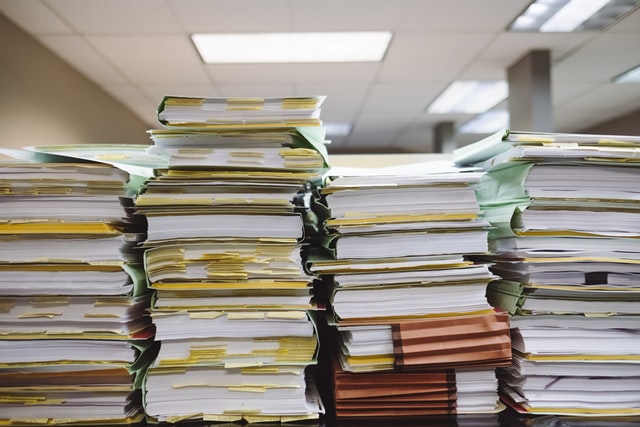The bailiff is on the sidewalk with a locksmith, IT expert and assistant district attorney, or a whole team of bailiffs and IT experts, standing next to him. They walk out the door after an evidence seizure with a whole lot of information. Confidential data about your employees, finances, customers and business processes are also taken by the bailiff. You don't want this information to end up with the garnishee and other third parties. In this blog, I discuss options for protecting your confidential data when it has been garnished.

Confidential data may be seized. Confidential data is regularly the very subject of the seizure of evidence. Consider competitively sensitive information such as contracts, orders and financial data or works protected by an intellectual property right. Privacy-sensitive information such as employee and customer data may also be seized.
Legal secretaries can refuse to provide confidential information. This stems from the right to privilege. Doctors, lawyers and notaries, for example, can invoke this right to privilege. It does mean, however, that they need only withhold information entrusted to them in that capacity. If a third party has deposited confidential documents with a secret-keeper, that third party cannot invoke the right to privilege. Those documents can then, in principle, be seized.
In a seizure of evidence, the bailiff must ensure the confidentiality of the evidence to be seized. The leave explicitly includes this. The bailiff must also have the IT expert sign a confidentiality agreement and verify that he has liability insurance. The bailiff and IT expert should not provide information about the garnished evidence to third parties. If a bailiff does provide that information, he can be criminally prosecuted. In addition, he may be liable under civil and disciplinary law.
The garnishee does not have immediate access to the seized evidence. An independent third party first takes custody of them after the attachment. This may be, for example, the bailiff or a notary, but in many cases the IT expert is also the custodian. Even during custody, the bailiff and IT expert must maintain confidentiality, at least until the garnishee or the court has given permission to the garnishee to view the garnished evidence.
So at least until this point, the confidential data in the attachment is protected. The garnishee has not yet seen or obtained the documents. For that, the garnishee needs permission from the garnishee or the court.
If the garnishee gives permission to see the evidence, then the parties can make agreements regarding confidential data. The garnishee or an expert can black out, code (X,Y,Z) or remove confidential data such as employee, customer and product names. Another option is for the garnishee's attorney to first review the documents to assess the extent to which the information is relevant and necessary to support the garnishee's claim. Another option is for an independent third party to inspect and prepare a report on it. Furthermore, the parties can agree that only certain, designated persons may have access to the confidential information, possibly after signing a confidentiality agreement.
Confidentiality of data can thus be ensured in various ways. The appropriate measures must be considered on a case-by-case basis.
If the garnishee does not consent to inspection, then the garnishee must ask the court to allow him to inspect the garnished evidence.
The garnishee may raise the defense against that access request that information is confidential and therefore need not be provided. This defense must be well-founded. If possible, it is advisable to suggest a way in which access can be granted but the confidentiality of data remains guaranteed. As a rule, judges weigh interests between the interest in keeping the information confidential and the interest of the garnishee in obtaining the evidence. The judge may also attach conditions to the inspection. Those conditions may be the same as the measures I mention above.
Thus, confidential data that has been garnished is not simply given to the garnisher. There are ways to protect this confidential data.
More articles by SOLV Lawyers

